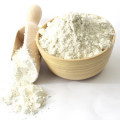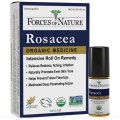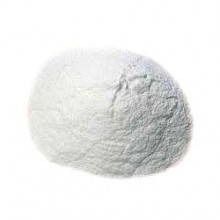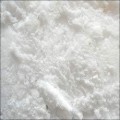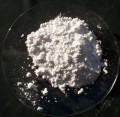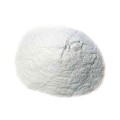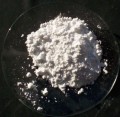 Loading... Please wait...
Loading... Please wait...- Home
- About Us
- Shipping, Returns & FAQ's
- Contact Us
-
For Your Information
- Canadian Customers Have a Choice if Shipping Via UPS
- Aura Cacia Homemade Aromatherapy Recipes
- Bella Nella Altered Art & Paper Crafts Blog
- Forms of Herbal Preparations
- Laundry Tips To Conserve Energy Blog from The Laundress
- The Story of Frontier Natural Products Co-Op
- Sovereign Silver Hydrosol and Aloe Protocol Stops Downward Spiral of Gut Dysbiosis
- Disclaimers
- Recommended Links
- RSS/Recent News
- The Story of Typhoon Housewares
- Reviews/Testimonials
- Raw Ingredients for Mfg
- Home
- Raw Materials
- Additives
- Calcium Hydroxide Hydrated Lime Powder Food-Grade FCC Kosher Bulk
Calcium Hydroxide Hydrated Lime Powder Food-Grade FCC Kosher Bulk
Product Description
Calcium hydroxide, traditionally called slaked lime, is an inorganic compound with the chemical formula Ca(OH)2. It is a colorless crystal or white powder and is obtained when calcium oxide (called lime or quicklime) is mixed, or "slaked" with water. It has many names including hydrated lime, builders' lime, slack lime, cal, or pickling lime. Calcium hydroxide is used in many applications, including food preparation. Limewater is the common name for a saturated solution of calcium hydroxide.
One significant application of calcium hydroxide is as a flocculant, in water and sewage treatment. It forms a fluffy charged solid that aids in the removal of smaller particles from water, resulting in a clearer product. This application is enabled by the low cost and low toxicity of calcium hydroxide. It is also used in fresh water treatment for raising the pH of the water so pipes will not corrode where the base water is acidic because it is self-regulating and does not raise the pH too much.
Another large application is in the paper industry, where it is used in the production of sodium hydroxide. This conversion is a component of the Kraft process.
Food Industry Uses
Because of its low toxicity and the mildness of its basic properties, slaked lime is widely used in the food industry to:
- clarify raw juice from sugarcane or sugar beets in the sugar industry
- process water for alcoholic beverages and soft drinks
- pickle cucumbers and other foods
- make Chinese century eggs
- make corn tortillas (it helps the corn flour (masa) bind together)
- clear a brine of carbonates of calcium and magnesium in the manufacture of salt for food and pharmaceutical uses
- fortify (Ca supplement) fruit drinks, such as orange juice, and infant formula
- aid digestion (used in India as paan, a mixture of areca nuts, calcium hydroxide and a variety of seeds wrapped in betel leaves)
- substitute for baking soda in making papadam
Native American Uses
In Spanish, calcium hydroxide is called cal. Corn cooked with cal (nixtamalization) becomes hominy (nixtamal), which significantly increases the bioavailability of niacin, and it is also considered tastier and easier to digest.
In chewing areca nut or coca leaves, calcium hydroxide is usually chewed alongside to keep the alkaloid stimulants chemically available for absorption by the body. Similarly, Native Americans traditionally chewed tobacco leaves with calcium hydroxide derived from burnt mollusk shells to enhance the effects. It has also been used by some indigenous American tribes as an ingredient in yopo, a psychedelic snuff prepared from the beans of some Anadenanthera species.
Caution: Avoid over-exposure. If ingested do not make a person throw up unless told to do so by poison control or a health care professional.
If the chemical was swallowed, immediately give the person water or milk, unless instructed otherwise by a health care provider. Do NOT give water or milk if the patient is having symptoms (such as vomiting, convulsions, or a decreased level of alertness) that make it hard to swallow.
If the chemical is on the skin or in the eyes, flush with lots of water for at least 15 minutes.
If the person breathed in the poison, immediately move him or her to fresh air.
For immediate help call 911 or the National Poison Control Center 800-222-1222.
For a complete list of symptoms visit medline
CAS: 1305-62-0
aka: Ca(OH)2, Slaked lime, Milk of lime, Calcium(II) hydroxide, Pickling lime, Hydrated lime
Origin: USA
Notes: Median particle size is 4 microns. Kosher Certified. Food-Grade. FCC.
Specifications are subject to change without notice.
*FDA disclaimer
Caution: Do not make a person throw up unless told to do so by poison control or a health care professional.
If the chemical is on the skin or in the eyes, flush with lots of water for at least 15 minutes.
If the chemical was swallowed, immediately give the person water or milk, unless instructed otherwise by a health care provider. Do NOT give water or milk if the patient is having symptoms (such as vomiting, convulsions, or a decreased level of alertness) that make it hard to swallow.
If the person breathed in the poison, immediately move him or her to fresh air.
For immediate help call 911 or the National Poison Control Center 800-222-1222.
For a complete list of symptoms visit nlm.nih.gov/medlineplus/ency/article/002910.htm
You Recently Viewed...
Currency Converter
Choose a currency below to display product prices in the selected currency.




